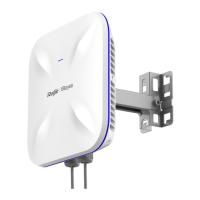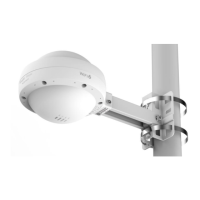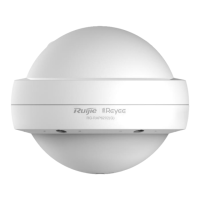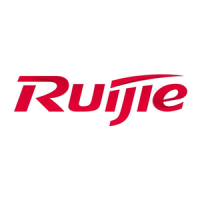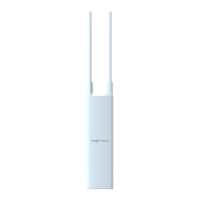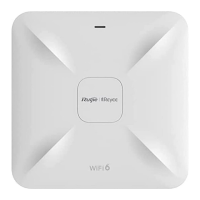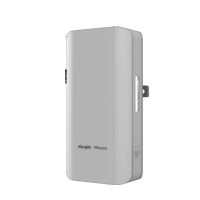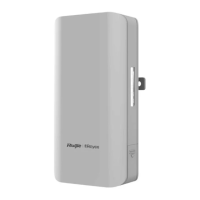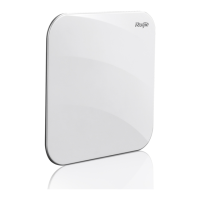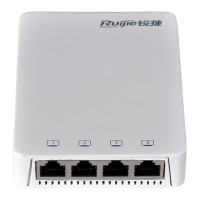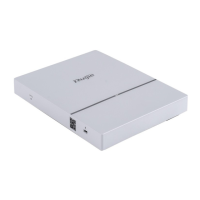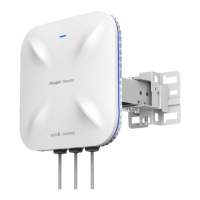
Do you have a question about the Ruijie Reyee RAP6260-D and is the answer not in the manual?
| Brand | Ruijie |
|---|---|
| Model | Reyee RAP6260-D |
| Category | Wireless Access Point |
| Language | English |
Identifies the target readership for the document.
Provides resources and contact information for user assistance.
Explains the meaning of graphical interface elements used in the manual.
Details the warning, caution, and note symbols used for important alerts.
Provides a general introduction to the RG-RAP6260(H)-D access point's capabilities and design.
Lists all items included in the product package for the RG-RAP6260(H)-D access point.
Details the physical components, ports, LEDs, and reset functionality of the access point.
Identifies and describes the various ports and status LEDs on the access point.
Explains the function and operation of the reset button for factory settings and restarts.
Provides detailed technical data, including radio design, protocols, antenna, and spatial streams.
Details the power input requirements, consumption, and supply modes for the access point.
Advises on maintaining clearance for proper ventilation and cooling of the access point.
Outlines critical safety measures to prevent injury and damage during installation.
General guidelines for safe installation in various environments, avoiding hazards.
Precautions to take when physically moving or handling the device to prevent damage.
Specific warnings and procedures for electrical safety during installation and operation.
Safety instructions related to the SFP transceiver's laser product classification.
Defines the necessary environmental conditions, including bearing, ventilation, and temp/humidity.
Specifies the structural integrity needed for wall or pole mounting locations.
Details the space required around the AP for adequate airflow and natural cooling.
Outlines acceptable operating temperature and humidity ranges for prolonged service life.
Instructions on sealing unused ports using connector plugs or cable glands for water resistance.
Explains the importance and method of proper grounding for stability and lightning protection.
Guidelines for placement to minimize electromagnetic interference from external sources.
Lists the common and special tools required for installation and setup.
Visual guide outlining the step-by-step installation process from start to finish.
Covers planning, site readiness checks, and essential precautions before installation.
Important safety and operational advice during the installation process.
Steps to attach the mounting arm to the access point body.
Detailed procedure for mounting the access point securely on a wall surface.
Instructions for mounting the access point onto a vertical pole.
Instructions for mounting the access point onto a horizontal pole.
How to adjust the tilt angles of the access point for optimal Wi-Fi coverage.
Specific steps for connecting the Ethernet cable using the provided cable gland.
Instructions for connecting the grounding cable to the access point.
Best practices for organizing, securing, and routing cables neatly.
Safety and quality advice for bundling cables to ensure longevity and performance.
Final checks to ensure the access point is correctly installed, connected, and operational.
Steps to prepare the environment for configuring the access point.
Procedure for powering up the access point after installation and initial checks.
Items to check before powering on the access point for the first time.
Items to verify after the access point has been powered on.
How to monitor the status of the access point using its LED indicator.
Guidance on what to do if hardware issues or faults are detected.
A visual guide for diagnosing and resolving common issues with the access point.
Lists common problems encountered and their potential solutions.
Details about Ethernet ports, fiber-optic connectors, and media types.
Technical specifications for RJ45 Ethernet ports, including wiring and standards.
Information on connecting fiber-optic cables using SFP modules.
Specifications and types of Small Form-factor Pluggable modules supported.
Guidelines for routing, bundling, and managing cables in the equipment.
Specifies minimum bend radii for different cable types to prevent damage.
Safety and quality advice for bundling cables to ensure longevity and performance.
Methods and guidelines for securely fastening cable bunches.
